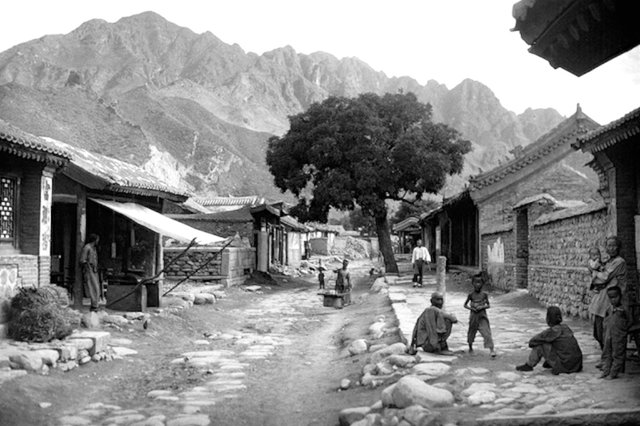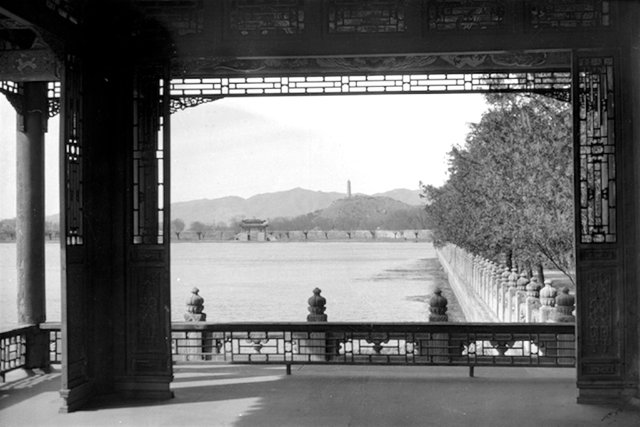Old Photo: City Memory 1929, antique old Beijing

Beijing Confucius Temple was built in the Yuan Dynasty in the 14th century. After the Yuanshizu Kublai was settled in Beijing, in order to strengthen the ideological rule, the feudal aristocrats and scholar-officials of the Han nationality were ordered to attack the old dynasties, and Xuanfu Wang Yu was built in the Jinshu Miyin Temple to worship Confucius. Beijing Confucius Temple is located in Guozijian Street, Dongcheng District, Beijing. It is also known as the Four Great Confucian Temples in China with Nanjing Confucius Temple, Jilin Confucius Temple and Qufu Confucian Temple.

Xisi is a place name in Beijing. It was originally called “Xi Si Pai Building”. It was built in the Yuan Dynasty. It was named after a wooden archway in the east, west and north of the crossroads. In 1954, due to the road was demolished, the place name was renamed Xisi. The West Fourth Archway is located in the west of the Imperial City and is symmetrical with the “Dongsi Archway” of Huangcheng East. West Fourth is the main thoroughfare of Beijing City, and the surrounding business is booming.

Nankou Town is affiliated to Changping District of Beijing, 7.5 kilometers northwest of Changping Satellite City, at the junction of Yanshan Mountain and North China Plain. As a railway transportation hub and a military town, Nankou Town has left many nationally renowned important figures in the history of less than a hundred years of history.

The Great Wall stretches from east to west for thousands of miles; since ancient times, it has been built for more than two thousand years. On the verge of climbing, it is necessary to go to the cliffs and the ruins of the cliffs, and the hardships of its construction can be seen. Its majestic style, aesthetic value, defensive function and military strategy are rare in the world's cultural heritage.

The Summer Palace, the royal garden of the Qing Dynasty in China, formerly known as the Qingyi Garden, is located in the western suburbs of Beijing, 15 kilometers from the urban area, covering an area of about 290 hectares, adjacent to Yuanmingyuan. It is based on Kunming Lake and Wanshou Mountain, and is based on Hangzhou West Lake. It is a large-scale landscape garden built by the design method of Jiangnan Garden. It is also the most preserved royal palace, known as the “Royal Garden Museum”. .

The Temple of Heaven was built in the 18th year of Ming Yongle (1420). It was rebuilt in the Qing Emperor Qianlong and Guangxu. It is the place where the emperors of the Ming and Qing dynasties worshipped the Emperor and prayed for the harvest of the grain. The Temple of Heaven is the general name of the two altars of Qiuqiu and Qiugu. There are two walls of the altar, forming an inner and outer altar. The altar wall is in the north and the north circle, symbolizing the heaven and earth.

Chongwenmen, the yuan called the door of civilization, commonly known as "Hadmen", "Haicangmen". Chongwenmen is famous for Zhenhai Iron Turtle in Haisi Temple, Zuocheng Town, Yucheng City. In addition, the harshness of Chongwenmen’s taxation has also made foreign businessmen look forward to fear. The name "Chongwen Iron Turtle" is famous in Kyoto. Going to the wine cart, the city is a wine road. Most of the wines and wines of that year were shipped from Hebei and other places, and it is natural to go south. The car carrying the wine advanced the left-door of the outer city, and then went to Chongwenmen to pay taxes.

Xishan, Beijing, is a branch of Taihang Mountain. It was called “the first of Taihang Mountain” and is also known as Xiaoqingliang Mountain. It is like smashing and smashing the city from the west. Therefore, the ancients called it "the right arm of the gods." For hundreds of years, I don’t know how many literati’s bachelors have fallen for the four-time scenery, and have fun and enjoy it; or leave a title for it to add to the victory.

The clock tower is located at Di'anmenwai Street, Dongcheng District, Beijing. It is located at the north end of the old Beijing central axis. The original site is the central pavilion of Wanning Temple in Datianshou, Yuandadu. Ming Yongle was built in the 18th year (1420) and was destroyed by fire. The Qing Emperor Qianlong rebuilt in 1745 and was completed two years later. In order to prevent fires, the building used a masonry structure.
Congratulations @klddbe! You have completed the following achievement on Steemit and have been rewarded with new badge(s) :
Click on the badge to view your Board of Honor.
If you no longer want to receive notifications, reply to this comment with the word
STOPTo support your work, I also upvoted your post!
Do not miss the last post from @steemitboard:
SteemitBoard World Cup Contest - Russia vs Croatia
Participate in the SteemitBoard World Cup Contest!
Collect World Cup badges and win free SBD
Support the Gold Sponsors of the contest: @good-karma and @lukestokes